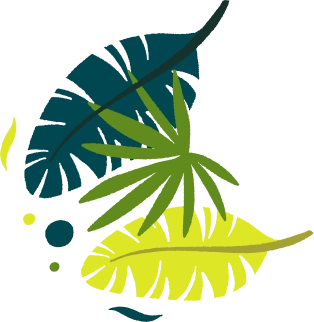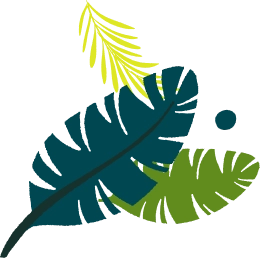


If you are reading this then it means you might have already seen the Son Doong Cave video on Youtube/Tiktok/Instagram and now just want to visit this largest caves of the world!
It feels like nature’s hidden zoo. Descending 90m through a jungle valley into Hang Son Doong (in Phong Nha, Vietnam), you’ll emerge into an underground rainforest with sunlight pouring through collapsed roofs.
Oxalis (the official tour operator for Hang Son Doong) notes that visitors often encounter howling monkeys, translucent cave insects, squeaking bats and blind fish in this unreal place! Scientists have even discovered new species here (blind cave fish, white shrimp, huge spiders, etc.)
Venturing deeper, Son Doong opens onto an entire jungle (often called the Garden of Eden) under collapsed roof skylights. There's a standing tropical forest inside the cave, complete with 30-meter trees and streams. Biologists report seven + new species adapted to the darkness - everything from eyeless fish and cave frogs to albino millipedes and spiders.
Son Doong is really an animal lover’s dream. In this guide we’ll share practical Son Doong travel tips, highlight the creatures you may see, and help you plan your cave expedition.
the Largest Cave in the World Hang Son Doong
Son Doong Cave (Hang Sơn Đoòng in Vietnamese) itself is deep in Phong Nha Ke Bang national park, Quang Bình.
The nearest airport is Dong Hoi (VDH).
From Hanoi or HCMC you can fly to Dong Hoi (about a 1h25 flight from Hanoi), then drive ~45 km west to Phong Nha Town.
Many people take an overnight bus/train from Hanoi to Dong Hoi or even directly to Phong Nha (several operators run night buses that drop off in Phong Nha early in the morning).
Once in Phong Nha town, you’ll connect with Oxalis for a briefing. Oxalis can arrange a shuttle from Dong Hoi, but a taxi (about 45 km) also works.
Hang En Cave
1. Hang En Cave. Before Son Doong, almost all groups stop at Hang En (the world’s 3rd-largest cave) and camp there. This enormous cave has its own river and lake which is the perfect warm-up. (In fact, you pass through its forested entrance before reaching Doong.)
a Grey Headed Flying Fox
2. Garden of Eden. The big draw inside Son Doong is the collapsed “Garden” area under the second skylight. Here sunlight streams in on a plot of jungle. Trek here at dusk or dawn to hear wildlife and most likely you can see monkeys swinging through the trees and hearing calls of hornbills and flying foxes overhead. Keep cameras ready for bats flitting in the twilight.
If you are using a smartphone, many phones come with a feature where if you quickly double press the power/volume button, the camera will open.
I use this all the time when I have only a second or two to click a fleeting moment.
Blind Cave Fish in Son Doong
3. Underground Pools & Beach Camps. Several shallow rivers run through Son Doong. You can swim (very briskly, ~17-22°C) in clear pools with only tiny blind fish. Day 3 usually ends at Beach Camp which is a sandy riverside inside the cave under Doline 1 (the first collapse) where tents are pitched.
Camping by a clear pool 150m underground is quite an experience!
The Great Wall of Vietnam Section
4. Rock Formations. Look for the giant stalagmite called the “Hand of Dog” (a 70m pillar) soon after entering. On Day 4 you’ll climb the ladder to the “Great Wall of Vietnam,” a 90m overhanging rock ascent that feels like hiking a cliffside skyscraper. Take breaks to gaze back at the immense caverns.
Rhinoceros Hornbill
5. Cave Wildlife. Besides monkeys and bats, keep an eye out for cave-dwelling insects on the walls, swiftlets darting above, or snakes/rodents near the jungle edges.
Oxalis points out even rare park species like Ha Tinh langurs and great hornbills live above the cave.
You will be asked to move quietly at the jungle sections as animals are shy!
Each of these spots makes Son Doong unforgettable. And because these are active ecosystems, there’s no guarantee what you’ll see (nature’s fun that way!). But people do report spotting species like long-tailed macaques, bats by the dozens, blind shrimp in pools, and even large frogs or snakes along the trail.
Son Doong is NOT a public cave you can visit on your own. It can only be accessed on a guided Oxalis expedition (no private trips or pet visits allowed).
The tour cost is steep at about US$3,000 per person. This includes all park fees/permits (roughly $600), camping gear, meals, and full support (guides, porters, cooks). Oxalis is the only company licensed to run Son Doong tours, and groups are kept small (10 people max).
Because of capacity limits (the park caps ~1000 visitors per year), sign up many months in advance.
Sidenote: Are you planning to go to Phong Nha but can’t afford the steep cost of Hang Son Doong? Then look for budget alternatives to Son doong cave where some of them are as good as Son Doong like the Hang Pygmy (the fourth largest cave in the world)!
Most Beautiful Camping Spot in Phong Nha Hang Pygmy Cave
The tours operate January-August each year (monsoon rains close the cave outside that window).
Note the cave has no infrastructure of its own. The Oxalis team brings everything: tents, food, eco-toilets and first-aid kits.
At the “Level Playing Fields” campsite before the first skylight, staff set up a compost toilet tent and changing rooms. Other than that, outside Phong Nha town you won’t find shops or bathrooms. Most groups stay in Phong Nha before/after the trek, where you’ll find guesthouses, cafes and gear shops.
Inside Son Doong, conditions are surprisingly mild. Temperatures range about 22-25°C in summer (dropping to ~17-22°C in the cooler months). Humidity is high but steady. Sunlight hits the cave floor around midday through the collapses, so plan jungle explorations then for the best views.
Camping Location Inside the Son Doong Cave Is Massive
A typical multi-day itinerary (since you can’t really “day-trip” Son Doong) is:
Day 1: Arrive Dong Hoi/Phong Nha. Attend Oxalis safety briefing at 5pm. Overnight in Phong Nha town.
Day 2: Trek ~10km through jungle to Hang En Cave. Camp under its high roof; swim in its lake.
Day 3: Hike to Son Doong entrance, rappel into the cave, cross rivers, and reach the first campsite (“Level Playing Fields”) just before Doline 1. (Along the way you’ll pass the Hand of Dog formation.)
Day 4: Walk through the cave’s underground forest (Garden of Eden) and camp under the second doline.
Day 5: Continue through Son Doong, climb the “Great Wall of Vietnam” ladder, exit the cave, and rest at a farmstay (Chay Lap Farmstay) near Phong Nha.
Tip: If you have only a few hours, consider visiting the nearby Phong Nha Cave or Paradise Cave. But these are dry and touristy; only caves like Son Doong/Hung Thoong/Hang Pygma give the jungle-cave adventure.
a Mini Lake Inside the Cave
Son Doong is an extreme adventure, but Oxalis ensures safety. Hikes involve steep climbs, rappels and knee-deep river crossings. Wear sturdy boots, long pants, long socks and sleeves to avoid insect or snake bites. Follow your guides closely - they carry all safety gear and know the route.
Inside the cave, minimize your environmental impact. Oxalis strongly urges travelers to stay on marked paths and “leave nothing but footprints”. Guests are asked to keep noise down in wildlife areas (lots of rare langurs and birds live above).
Use your head - literally - as ceilings are low in places. Don’t point bright lights or cameras at animals, and take all trash back out with you.
Weather cautions: if rain is heavy, Oxalis may cancel or delay (they monitor the rivers carefully). Always carry at least a rain jacket and a dry bag (you’ll be swimming and streams can rise).
Stock up on any meds in Phong Nha; there is no medical help inside the park.
You literally sign a waiver form before doing the tour so do not hide any medical conditions, seriously!
the First Doline of Son Doong
How do I visit Son Doong Cave?
Only by booking Oxalis Adventure’s official Son Doong expedition. Independent trekking or day visits are not allowed. You’ll register and brief in Phong Nha, then join a 5 Day guided trek into the cave.
What animals will I see?
The cave ecosystem has lots of wildlife. Expect to see cave‐adapted animals like blind fish and shrimp in the rivers, plus bats and cave insects (or a blind millipede!). In the jungle areas you may spot macaques, langurs or hornbills.
It's not unheard of visitors catching glimpses of monkeys and even flying foxes swinging in the trees under the skylights. (No large predators live here so chill!)
How much does it cost?
Roughly US$3,000 per person for the standard 5D5N tour. This includes permits, guides, meals, equipment and camping gear. There is no separate “entrance fee” beyond that, but you will need to pay for travel to Phong Nha and any hotel.
How difficult is the trek?
Son Doong is rated very challenging. Oxalis classifies it as Level 6 (the hardest on their scale) involving long jungle hikes, river crossings, and steep climbs. You must be healthy, agile, and preferably experienced in trekking.
When is the best time to go?
The only season is the dry season (roughly Jan-July). Heavy rains from August to December shut the cave. Go in the “shoulder” spring/summer for mild weather and blooming jungle. Inside the cave it’s mostly 22-25°C even in winter, but the jungle trails outside can be hot (or muddy if a late downpour hits).
Are pets allowed or is it dog-friendly?
No, absolutely not. Son Doong is a 5 day expedition through wilderness - you cannot bring pets. The group stays in tents in remote jungle with no facilities for animals.
Is Son Doong safe?
With proper preparation and a guide, yes - but it’s serious adventure travel. Follow all instructions, wear the gear provided, and use caution around water and heights. Oxalis has professional support staff to manage risks. Many past trekkers say it feels safer than people expect, as long as you’re fit and follow the rules.
a Path Leading to the Tiger Cave in Phong Nha
Can I still book the Son Doong Cave tour in 2025?
Officially oxalis has mentioned that the Son Doong Expedition 2025 is fully booked as of writing this in July 2025.
But we would suggest you to give them a call regardless as there are cancellations which open up the slot every now and then.
We have heard of many people getting success in booking the tour (via offline route of phone call) even though it was not available online.
On the oxalis website, online booking of the Son Doong tour is already open for the year 2026.
What other options are there in Phong Nha besides Son Doong cave?
Way too many! There are two types of tours in Phong Nha:
a) Public tours where you don’t need a guide and can just buy the ticket at the ticket office of each cave. Examples of such self guided phong nha tours are Dark cave, Phong Nha cave, Paradise Cave.
b) Exclusive cave tours where you can not do the trek by yourself as its both dangerous and prohibited by local law. Two main tour operators in Phong Nha have their exclusive cave tours with licence granted by Vietnamese government - Jungle Boss and Oxalis adventures.
Examples of such guided tours are Hang Pygmy, Son Doong, Hang Ba deep jungle expedition, Tiger Cave etc.
Get the latest information about our tours and special offers!